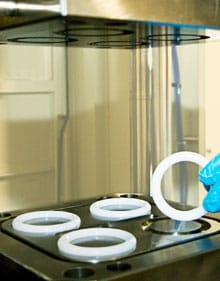Identifying Promising Compounds
Drug development is a long and complex process, which is especially true for novel products like microbicides.
Developing new HIV prevention products, including microbicides, requires many years of sustained work and investment.
No organization, whether commercial or nonprofit, has the resources to progress every possible drug candidate to a registered product.
Strategic Development Approach
That is why IPM’s strategic product development approach starts with a series of scientific studies that help identify and prioritize promising compounds and product formulations.
The goal of product prioritization is to identify products that are most promising to help achieve, in the most efficient way possible, IPM’s mission: to advance the development and availability of safe and effective microbicides and other HIV prevention methods for women in developing countries.
IPM employs a decision algorithm to prioritize candidates and product forms with the goal of developing the best products and making them available to women as quickly as possible. The more choices a woman has to protect her own health, the more likely she will be able to find one that matches her needs and fits within the context of her life.
Prioritization Criteria for Microbicide Candidates
The compounds in IPM's pipeline are evaluated on a regular basis against multiple criteria, including:
- mechanism of action (MoA)
- antiviral potency
- physical and chemical properties
- formulation potential
- stage of microbicide development
- previous human experience
- ease of manufacturing
- regulatory pathway
- cost
- available safety profile
After our most recent evaluation, three candidates emerged as clear priorities for IPM: dapivirine, DS003 and darunavir.
Evaluating Product Forms
Since our inception, IPM has been developing multiple vaginal product forms for delivery of antiretroviral (ARV) drugs. These delivery methods include on-demand vaginal tablets, films and gels, and long-acting vaginal rings that provide sustained-release for one month or more. Each product form has its own advantages and limitations.
Considerations for a particular method may include:
- cost
- complexity to manufacture
- acceptability and familiarity to the groups who will use it
- physical and chemical compatibility with other active pharmaceutical ingredients (APIs)
- ease of use/adherence burden
- stability of formuation
IPM's product development approach is also guided by new advances in HIV prevention and reproductive health to include potential new tools for women, such as multipurpose prevention products.
